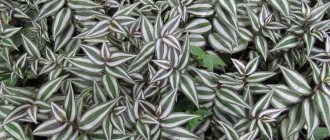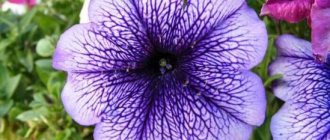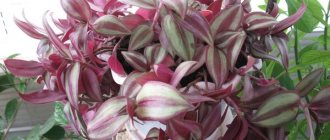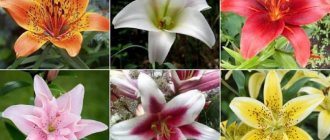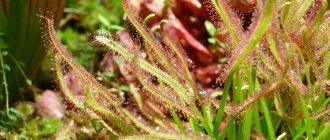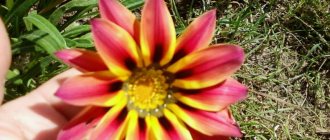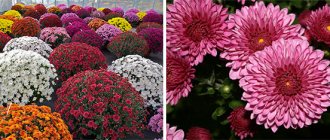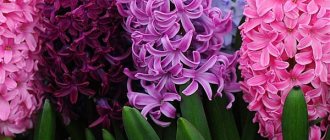The solemn and austere “daisies” of Gatsania are one of the largest and most original among the entire Astrov family. This plant attracts fans of geometry and modern patterns in potted format. And if on the streets, balconies and terraces gatsaniya seems to be a real star, then as a houseplant it is almost unknown. Meanwhile, it is Gatsania, of all the bright and fashionable summer plants, that is best suited for growing indoors. And although she has her own whims and requirements, it is not at all difficult to get her to bloom ceremoniously. And this is the only way to preserve flowering bushes in the fall.
Bright gatsaniya is the most unpretentious among summer gardeners at home
Can gazania be grown as a houseplant?
African chamomile decorates the garden. It is planted in flower beds, in the foreground of rock gardens, along paths. The plant has a powerful root system, a compact, low (25-30 cm) above-ground part. Narrow carved leaves are collected in a rosette.
During flowering, which lasts all summer, gatsaniya throws out tall, straight peduncles, on which single buds are formed. The shape of the flowers resembles a chamomile. The color of the baskets is very bright, diameter 5-9 cm.
In the garden the crop is grown as a summer plant. Where in winter the temperature is not lower than +10 °C - as a perennial. You can keep African chamomile in an apartment. In the summer, take the pot out onto the balcony, loggia, or terrace.
The heat-loving plant develops well at room temperature. With proper agricultural technology, it blooms profusely (15-20 baskets per season) and for a long time. In its homeland in Africa, wild gazania blooms all year round.
Watering mode
The seeds are watered using a spray bottle. It is worth knowing that the plant loves moisture, but does not tolerate waterlogging. The container with seeds and young sprouts needs to be ventilated daily. If condensation collects on the surface of the glass or film, it should be removed. Stagnation of water should not be allowed.
Specifics of cultivation
This is a heat-loving crop. For growth, development, abundant flowering, it needs sunlight. Gatsania is a special flower whose baskets fully open at midday when the sun shines on them. By evening the petals close. Taking into account this love of light, they choose a suitable place in the apartment.
Choosing a place for gatsaniya
South and south-west windows are suitable. The plant needs long daylight hours (15 hours) and 6 hours of direct sunlight. The buds do not open on cloudy days. They also close at night.
When growing in an apartment, the flower is illuminated using phytolamps with a blue spectrum. In summer, the temperature in the room is maintained at +20-28 °C. In winter, the flower must prepare for the new growing season, so conditions are created for it to rest. For several months they are transferred to a room where the temperature is kept at +10-16 °C.
Planting container
The flower has a tap-type root system. The main root is long and cannot be bent when planting (transplanting), so choose tall pots with a diameter of 40 cm. The bottom should have several drainage holes. A layer of expanded clay must be poured into the container.
soil mixture
The quality of the soil affects the decorative properties of the plant and its life expectancy. Gatsania roots feel comfortable in a light substrate. It should conduct air and moisture well. In heavy clay soil it stops growing. The soil mixture for the flower is prepared on the basis of ordinary garden soil:
- take 2 parts of fertile soil;
- sift 1 part of the humus;
- add 1 part of coarse river sand;
- add hydrogel.
See also
How to cover rhododendrons for the winter in the Moscow region, planting and care rulesRead
All substrate components are mixed well. Hydrogel is an important ingredient. It helps maintain a constant level of soil moisture. This is very important for gatsaniya. It equally does not tolerate severe waterlogging and prolonged drying out of the earthen clod.
Store-bought soil mixtures are suitable for growing gatsania. The packaging of the soil should be marked that the substrate is intended for cacti and succulents:
- Peter Peat Hobby;
- "Cactus";
- biosoil from with the addition of sapropel;
- soil for cacti from "Fasco".
How to plant correctly?
There is a large selection of hybrid and varietal gatsanias seeds on sale. The colors are very different. Seeds for seedlings are sown in February and early March. 3-month-old seedlings are planted in the ground. They dive into a container for home growing at any time. You can buy gatsaniya at a nursery. They offer seedlings in containers.
Sowing
When grown by seedlings, gatsaniya blooms 3-4 months after germination. When purchasing seeds, be sure to look at the dates. Germination lasts only 2 years. It is not difficult to sow gatsaniya. Its seeds are quite large.
The landing algorithm is simple:
- take tall glasses with a volume of 0.5 liters;
- drainage (fine expanded clay) is poured onto the bottom and filled almost to the top with substrate for cacti;
- water the soil with warm water, put 1-2 seeds in each glass, press them down lightly, spray the entire surface with water from a spray bottle;
- Cover the container with cling film and transfer it to a warm, bright place.
Seedlings growing without picking bloom faster. She adapts faster to a new place. But many gardeners prefer to sow African chamomile seeds in a common box.
Take a tall container, with sides 15-20 cm. Gatsania seeds are not soaked before planting. They are laid out dry on the surface of the soil in increments of 2-3 cm. Be sure to press the seeds shallowly or sprinkle them with a thin layer of sand.
The box is tightly covered with film. Keep in a warm place until sprouts appear. Shoots appear quickly. After 10 days, they are seated in separate cups. Gatsaniya tolerates picking well.
How to plant a purchased sprout
Gatsania seedlings are sold in cassettes. The height of the plants is 15-20 cm, the diameter of the root system is 7 cm. To decorate the loggia and apartments, choose beautiful flowerpots. A layer of expanded clay is poured onto the bottom. Purchase soil for cacti. Fill the container with it to ⅓ of the height and water it.
Carefully remove the gatsaniya seedling from the cassette and place it in the pot. Make sure that the central root does not bend. Add soil, compact it and water it. The root neck of the flower is not buried. It should be 3 cm below the edge of the pot. Then there will be enough space for watering.
See also
Description of catharanthus varieties, propagation, cultivation and care in open groundRead
Garden care from the moment of planting in open ground until autumn
Planting in open ground is carried out in a consistently warm time.
Immediately after sowing the seeds, calculate the approximate time when you will plant the gazania in open ground. This should be a period of no frost or severe cold. In this case, the soil should warm up by at least 40 cm.
Compost is poured onto a pre-selected sunny plot of land and dug up. Maintaining a distance of 20 cm from each other, holes are dug to a depth of 20 cm. Before lowering the peat pot into the ground, water the hole generously and add a tablespoon of fertilizer (potassium, superphosphate, soil).
How to care while growing
During growth, flowers are not watered heavily. Make sure that there are not many tall weeds growing around, which will block the sunlight necessary for the plant. Weeding the ground directly next to the gatsaniya must be done carefully so as not to damage the root, which is located quite close to the surface. That is why experts advise not to loosen the soil. To prevent the soil from losing moisture and becoming covered with weeds, the soil must be mulched (peat or compost).
With proper care, gazania flowering lasts about 20 days. As a result, pick off faded flowers in a timely manner to promote the appearance of new ones.
Do not forget to feed the plant once a month or a month and a half with a complete mineral fertilizer, which includes potassium, nitrogen and phosphorus.
How to prepare a plant for winter
Most often, with the arrival of winter, the bushes are cut off and the roots are dug up. However, if you want to keep a few flowering gazanias until next season, dig them up and plant them in a pot. At the same time, make sure that the lump of earth in which the plant grew all summer remains intact. Place the flower in a room with a temperature no higher than +8 or +10 degrees. It needs to be watered only when the soil is almost completely dry. With the arrival of spring, the stems are cut off and the roots are planted in a new bed.
What problems do gardeners have with growing and their solutions?
Both young and mature plants do not tolerate overwatering
Like all plants, gatsaniya is also susceptible to pests, from which it suffers and may die. These include slugs, aphids, spider mites, and snails.
Pest control methods:
- You can prevent the appearance of ticks and slugs by regularly weeding the area where gatsaniya grows, as well as pouring slaked lime between the bushes. In addition, spider mites can be killed with Ditox, Fufanon;
- It will be possible to get rid of snails only by manually collecting them, preventing further spread;
- To combat aphids, Aktara, Fitoverm, Biotlin are used.
If you notice that brown spots have appeared on the leaves, increasing in number every day, be prepared for the fact that the flower has been affected by gray rot. In this case, it will be very difficult to save the bush, so it is better to dig up heavily infected plants and take them away from the site. To prevent the occurrence of such a disease, you must follow the following rules:
- Do not overwater the gazania;
- Plant it in a well-lit place;
- The soil should be regularly ventilated, but free of drafts;
- For prevention, occasionally spray flowers with Fitosporin.
In some cases, gardeners claim that the plant does not bloom for a long time. The reason for this lies in improper care of gatsaniya or a bad place in which it grows.
Care instructions
Flower growers who grow gatsaniya note its unpretentiousness and drought resistance. No special skills are required to maintain it. It is enough to know the characteristics of a flower and love it.
Watering and fertilizing the plant
Gatsaniya does not need frequent watering. When a clod of earth is systematically waterlogged, the roots begin to rot and it stops growing. The soil is moistened no more than once a week. To control, check whether the top layer (3-4 cm) has dried. Leaves are not sprayed. They are not necessary.
About 2-3 times a week, the gatsaniya in the pot is watered with low concentration flower fertilizer. When preparing the working solution, the dose indicated in the instructions is reduced by 2 times. They are not fond of nitrogen-containing fertilizers. Excess nitrogen prevents abundant flowering.
Caring for soil in a pot
The top layer of soil is renewed. Remove a layer of 1-2 cm and add a new one. When the root fills the entire volume of the pot, the flower is replanted. Select a deeper container. Its height should be one third higher than the old flowerpot.
The transplant is carried out according to the usual scheme:
- drainage layer;
- substrate - ⅓ of the height of the pot;
- transshipment of a flower together with a lump of earth;
- adding soil, watering.
Pruning gatsaniya
The bush produces up to 15 flower stalks per season. Their formation is stimulated by pruning old flowers. They live for 2 weeks. In late autumn, all old flower stalks are removed from the plant at the root.
Soil mixture
You can purchase ready-made universal soil, but preparing the mixture yourself will not be difficult. The composition should include regular soil, ash and vermiculite. The main requirements for soil are looseness, lightness and breathability. Ash will saturate the soil with useful substances and prevent the development of certain diseases.
Flower diseases and pests
Gatsania bushes growing at home can be parasitized by mealybugs, spider mites, and aphids. Because of insects, the flower loses its decorative effect. Destroy pests with insecticides:
- "Aktellik";
- "Akarin";
- "Oberon".
With poor agricultural technology, irregular, abundant watering, gatsaniya may suffer from gray rot. Its symptom is a dusty coating on the buds and the underside of the leaves. Treat a sick flower with fungicides:
- "Gamair";
- "Skor";
- "Alirin-B".
How to fertilize
How to properly plant aquarium plants in an aquarium? The answer to this question is therefore not too complicated. But is it necessary to fertilize green spaces immediately after they are in the container?
Like any other plants, underwater plants, of course, should be fed from time to time. It is best to use purchased compounds from a pet store for this. But if you wish, you can fertilize the plants with, for example, clay - regular red or blue. The use of such fertilizing in most cases leads to rapid growth of underwater flora. The fact is that clay contains almost all the microelements necessary for plants. Among other things, such feeding does not in any way harm most species of fish.
When planting plants in cups or substrate, clay, as well as purchased fertilizers, do not need to be used at first. It is worth feeding representatives of the underwater flora immediately after they are in the aquarium only if they are planted directly in the pebbles.
View gallery
Before using clay as a fertilizer, you simply need to crush it into powder. Next, it should be moistened with a small amount of water and small balls should be rolled out of it. The fertilizer obtained in this way can be stored in any convenient place and used as needed. To fertilize plants, balls of clay are placed under their roots. Purchased fertilizers are used according to the manufacturer's instructions.
Gatsania propagation
Most often, gatsaniya is propagated by seeds. The best time to plant seedlings is at the end of winter - the beginning of spring (February, March). Vegetative methods of propagation are practiced:
- dividing the bush;
- cuttings
For the purpose of propagation, gatsaniya bushes are transplanted into a container for the winter, and the above-ground part is cut off. Keep the flower in a cool (10 °C) room and water it rarely. With the onset of spring, the air temperature is increased to +20-25 °C, watered and fertilized. Start breeding:
- divide the bush into rosettes, root them in separate pots, and plant them in the garden when warm weather arrives;
- Cuttings are cut from side shoots 10 cm or more long and rooted.
The shoots are cut off at the heel, using a sharp scalpel. The bottom leaf is removed, the cut is dipped in root formation stimulator powder (“Kornevin”). The cuttings are planted in pots with a diameter of 9 cm.
Comfortable conditions are created for rooting. Cover with a transparent film cut from a plastic bottle. Provide diffused lighting and favorable temperature. After 5 weeks, each cutting forms a small bush that can be transplanted into a garden or a beautiful flowerpot.
Choosing the right sowing time
In the northern regions, gatsania begins to be sown in mid-February. Residents of the southern regions should start sowing in the second ten days of March. When sowing is early, the plant must be provided with additional lighting, otherwise the sprouts will stretch out and the gatsaniya will bloom much later. Under favorable weather conditions, approximately three and a half months pass from germination to the appearance of the first flowers.
Collection of seed material
Gatsania seeds are large, so they can be collected by hand. But there are certain aspects that should not be ignored. It takes about two months for the seeds to ripen. To prevent them from scattering in different directions during this time, you need to cover the seed box all over with gauze.
Attention!
After collecting seed material, it should be planted within two years. If this is not done, they will not sprout again.
It should be taken into account that the seeds of a crop do not always have time to ripen over the summer. They will be fully prepared provided that the hot and dry weather lasts until mid-autumn. When propagated by seed, hybrids do not retain varietal characteristics.
Popular varieties
There are several varieties of gatsaniya: pinnate, single-flowered, long-shooting, harsh. In gardening, the most popular hybrids are between natural varieties of African chamomile.
| Variety | Description and photo |
| Talent |
|
| Ministar | Large inflorescences are painted white, orange and golden. |
| Sunshine |
|
| Tiger mix |
|
